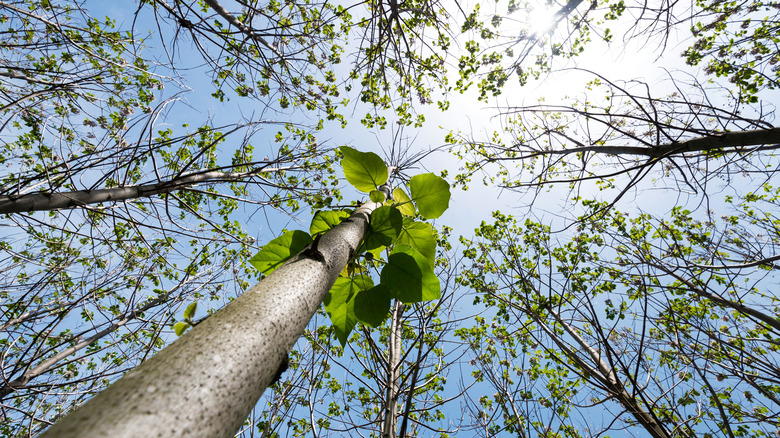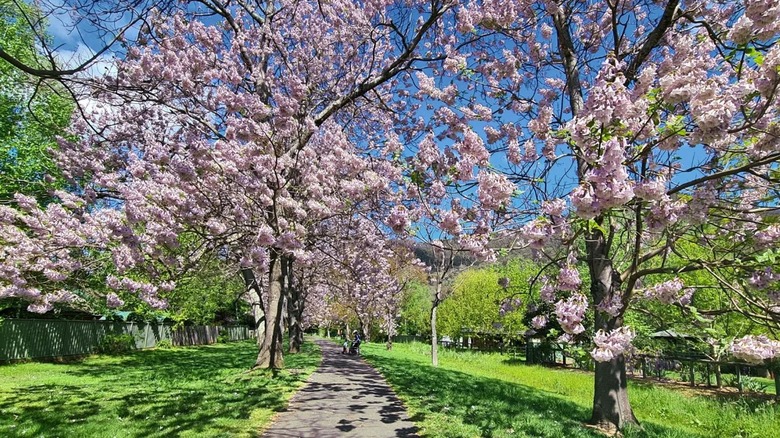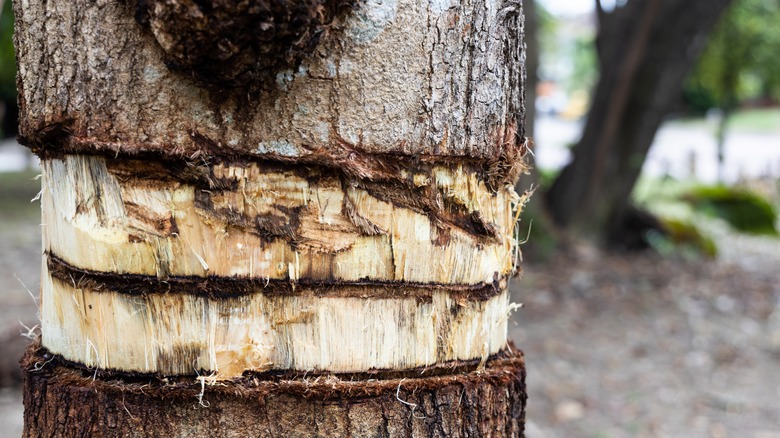The Beautiful Tree You'll Regret Planting Near Your Home
Planting trees around your place can boost its appeal, give you shade, and maybe even increase your property's value. But not every tree is a good fit for every spot. That's where the empress tree, also known as Paulownia tomentosa, comes into play. It's infamous for growing incredibly fast and hoards space both underground and above. While it does produce some seriously gorgeous plumage, planting an empress tree in your home garden might not be the best plan.
Because of its ability to grow and take down whatever gets in its way, the regal empress tree has earned the title of invasive species along the coast of the Eastern USA, down to Texas, and over to the Pacific Northwest. The sale of this beautiful but deadly-to-anything-growing-nearby tree is even banned in Connecticut. Also known as the princess tree, it originates from western and central China and is highly drought tolerant, has no problem with acidic soil, and is even known to survive raging fires due to its expansive rooting and sprouting system. The empress tree is basically a diva that can't get enough, so you really might want to think twice before planting it. Because of its inability to play well with others, the empress tree has been placed on numerous "most hated plants" lists across the web.
The fastest growing tree in the world
You've probably heard folks talking up the empress tree's speedy growth. People make it seem like it's the ultimate choice for getting some quick shade or greenery around your place. But this tree's rapid growth can be a bit of a two-faced troublemaker. The empress tree reaches full maturity by 10 years of age, and in its first year of life, it can grow up to 15 feet. Perhaps now you can see why this would be a problem. This is a tree that needs space, and lots of it. Big trees tend to have even more expansive root systems, and those nutrient-sucking tendrils can really put the hurt on sidewalks, plumbing, and even the foundation of your house. Not to mention choking out any other flora that's in the area. Like its tree family relative, the monkey pod (or rain tree), it has huge branches that are hefty but strangely fragile, so if you live in an area that gets severe thunder or windstorms, this can spell disaster.
And wait, there's more drama with empress trees. They drop seeds like it's a party trick, and these lightweight seeds hitch rides on the wind, sending them all over the place. The next thing you know, you've got a forest of these trees sprouting up everywhere, and controlling the chaos can be a real headache. Plus, the leaves and flowers they shed will turn your yard maintenance into a never-ending cleaning bonanza.
How to appease the empress ... or dethrone her
If your property already has an empress tree nearby, or if you're ready to tackle caring for one that's newly planted, it's important to give it a haircut each season. Pruning your Empress tree is a breeze, but when and how you do it can make a big difference. In the fall, trim it if you want a smaller, shrubbier look. This will also help to slow its growth and will allow it to send more energy toward creating some pretty purple flowers in the spring.
If you're looking to remove an empress tree from power, younger ones can be pulled out by hand, especially after a good rain when the soil is soft. Be thorough and make sure to get all the pesky root pieces. For the bigger, older trees, it's best to just cut it down and girdle it. The trick is to mix in some herbicides right after you cut or girdle and try to utilize methods like cut-stump or hack-and-squirt. Alternatively, you can go the chemical route and use herbicides like glyphosate or triclopyr. If you've just cut the tree down, girdled, or hacked, you can apply those herbicides directly to the stump.


